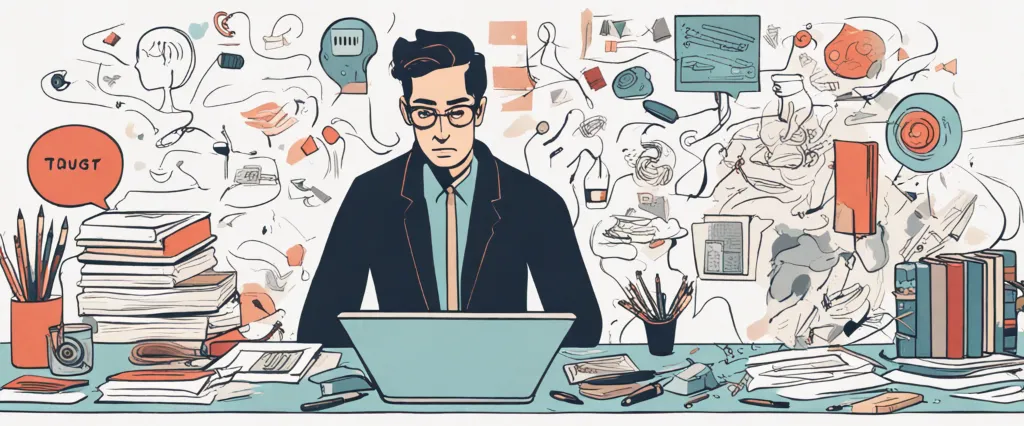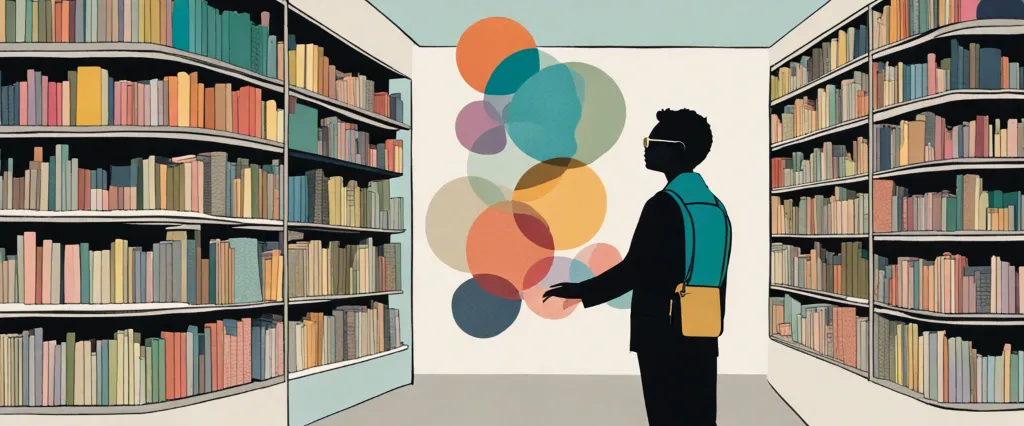“The Non-Designer’s Design Book” by Robin P. Williams is a practical and accessible guide aimed at helping beginners understand and apply design principles effectively. The book introduces the basic principles of design, including proximity, alignment, repetition, and contrast, and explains how to use them to create professional-looking designs. Through clear and concise explanations, Williams breaks down complex concepts and provides numerous examples to illustrate each principle. Additionally, she offers helpful tips and suggestions for improving readability, choosing fonts, and enhancing layouts. With its easy-to-follow instructions and emphasis on simplicity, “The Non-Designer’s Design Book” is a valuable resource for anyone looking to enhance their design skills.
How to Visit an Art Museum” by Johan Idema is a practical guide that aims to enhance the experience of visiting art museums. The book offers a fresh perspective on how to approach and engage with artworks, fostering a deeper appreciation for art.
Idema provides readers with various strategies and techniques to make the most out of their museum visits. He emphasizes the importance of being present in the moment and encourages visitors to take their time while exploring the artworks. The book teaches readers how to observe, analyze, and interpret different types of art, enabling a more immersive and personal experience.
Idema also shares practical tips for navigating museums, including how to plan visits, avoid crowded galleries, and deal with information overload. He highlights the value of curiosity, skepticism, and open-mindedness, urging readers to form their own opinions and connect with artworks on a personal level.
Furthermore, “How to Visit an Art Museum” offers insights into the behind-the-scenes workings of museums, shedding light on the curatorial process and the challenges faced by institutions. Idema emphasizes the role of museums in society, as places to spark dialogue, challenge norms, and inspire cultural growth.
Ultimately, this book serves as a guide and companion for art enthusiasts, both experienced and novice, providing practical advice, thought-provoking ideas, and a deeper understanding of the art museum experience.
Comparison between Two Books
Upon comparing The Non-Designer’s Design Book by Robin P. Williams and How to Visit an Art Museum by Johan Idema, several similarities regarding visual arts can be observed.
Firstly, both books emphasize the importance of design principles and elements in creating and appreciating visual art. The Non-Designer’s Design Book provides a comprehensive understanding of design concepts such as proximity, alignment, repetition, and contrast, which are fundamental in the field of visual arts. Similarly, How to Visit an Art Museum discusses the significance of composition, color, and form in the creation and interpretation of artworks.
Furthermore, both books underline the significance of visual communication and the impact it can have on the viewer. The Non-Designer’s Design Book highlights the importance of effectively conveying messages through visuals, while How to Visit an Art Museum emphasizes the role of visual storytelling in art. Both books acknowledge that visual arts have the power to evoke emotions, convey narratives, and provoke thought, highlighting the significance of effective visual communication in the artistic process.
Another similarity lies in the encouragement of active participation and engagement with visual arts. The Non-Designer’s Design Book suggests that readers actively apply the design principles discussed, striving to create visually appealing and effective designs. Similarly, How to Visit an Art Museum urges visitors to actively engage with artworks by observing, reflecting, and questioning, encouraging a deeper understanding and appreciation of the art.
Lastly, both books stress the importance of context within visual arts. The Non-Designer’s Design Book emphasizes the significance of understanding the target audience and designing within appropriate contexts to effectively convey messages. On the other hand, How to Visit an Art Museum asserts the relevance of understanding the historical and cultural contexts surrounding artworks to fully comprehend their artistic value and significance.
In conclusion, The Non-Designer’s Design Book and How to Visit an Art Museum share several similarities in their approach to visual arts. Both books highlight the importance of design principles, visual communication, active engagement, and contextual understanding within the creation and interpretation of visual arts. By recognizing these similarities, readers can gain a more comprehensive understanding of the world of visual arts and its various facets.
The Non-Designer’s Design Book by Robin P. Williams and How to Visit an Art Museum by Johan Idema approach visual arts from different perspectives, resulting in clear divergences in their content, focus, and goals.
Firstly, The Non-Designer’s Design Book by Robin P. Williams primarily caters to individuals interested in understanding and implementing design principles in various creative projects. It delves into the fundamental elements of design such as contrast, repetition, alignment, and proximity, providing practical tips and techniques for creating aesthetically pleasing visuals. This book is geared towards graphic designers, web designers, and anyone looking to enhance their design skills within a professional or personal setting. It primarily focuses on the principles and techniques of design, rather than exploring specific artworks or art history.
On the other hand, How to Visit an Art Museum by Johan Idema takes a more holistic approach to visual arts by guiding readers on how to approach and appreciate artworks within a museum setting. This book aims to enhance the museum experience for visitors, irrespective of their previous knowledge or understanding of art. It provides valuable suggestions on how to observe and interpret artworks, fostering a deeper connection and understanding with the art on display. Idema explores various aspects of art appreciation, including the historical and cultural context of artworks, the role of emotions, and the importance of engaging in personal reflection during museum visits.
While The Non-Designer’s Design Book is more focused on practical design techniques and principles, How to Visit an Art Museum looks at art appreciation as a contemplative and reflective activity. While design principles are relevant in both books, The Non-Designer’s Design Book emphasizes their application in design projects, whereas How to Visit an Art Museum concentrates on using observation and interpretation skills to appreciate and understand artworks within a museum context.
In summary, the main divergence between these two books lies in their objectives. The Non-Designer’s Design Book focuses on the practical implementation of design principles, targeting designers and creatives, while How to Visit an Art Museum takes a broader approach, guiding readers on how to appreciate and understand artworks within a museum setting, irrespective of their background knowledge in art.




